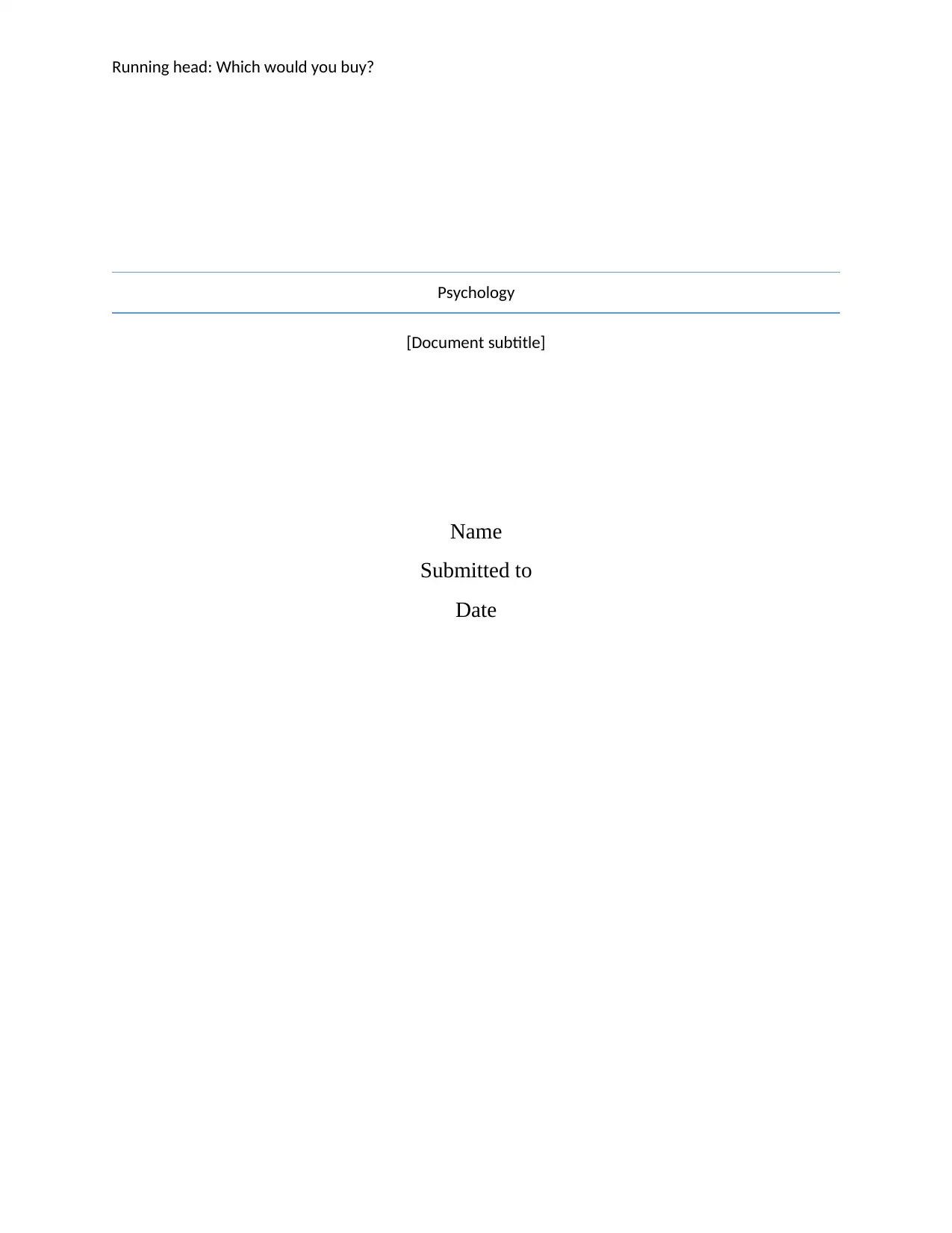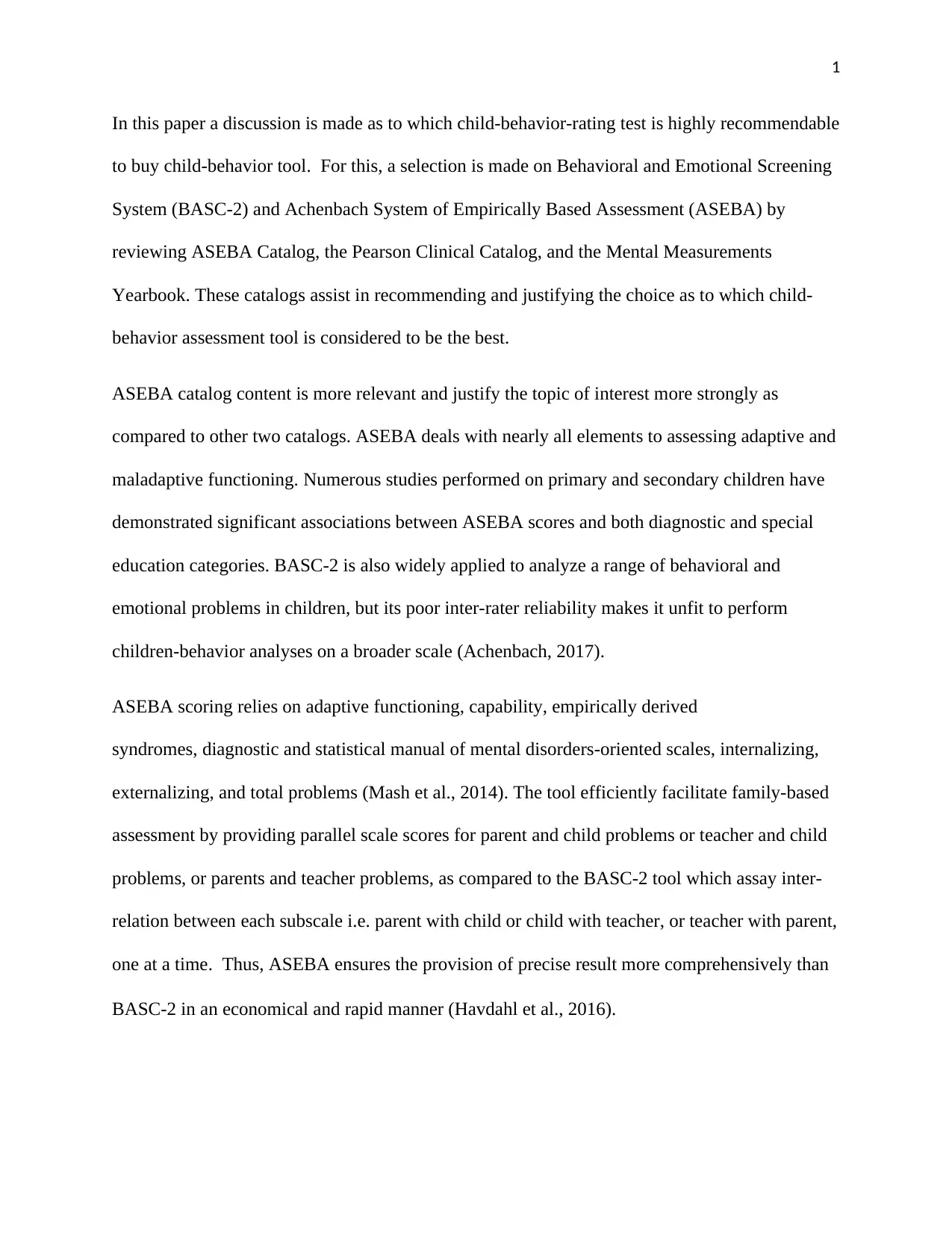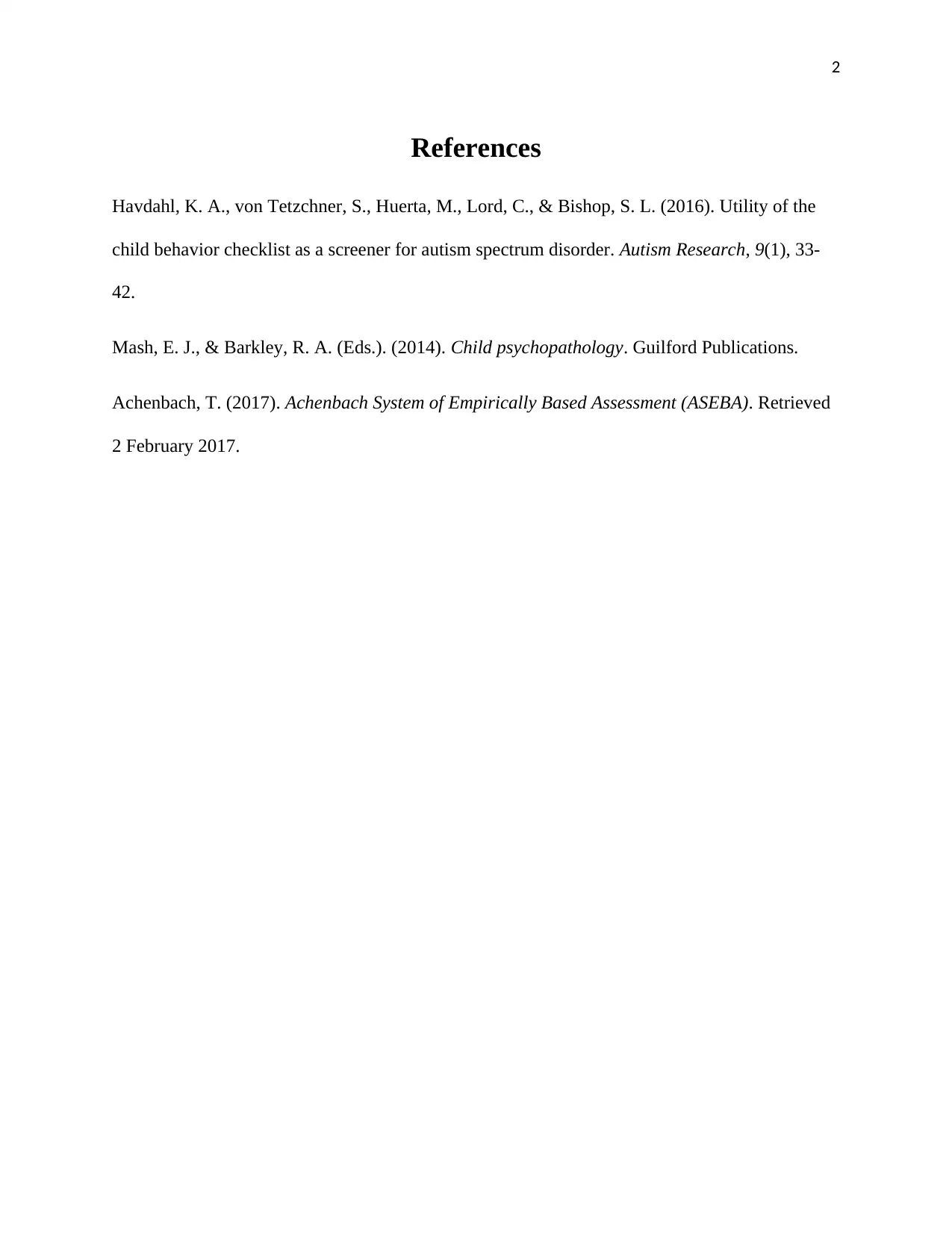Child Behavior Rating Test Comparison
VerifiedAdded on 2019/09/19
|3
|421
|134
Report
AI Summary
This report discusses the selection of a child-behavior-rating test, comparing the Behavioral and Emotional Screening System (BASC-2) and the Achenbach System of Empirically Based Assessment (ASEBA). The analysis, based on reviews from the ASEBA Catalog, the Pearson Clinical Catalog, and the Mental Measurements Yearbook, concludes that ASEBA is more recommendable due to its comprehensive coverage of adaptive and maladaptive functioning, strong empirical support, and efficient family-based assessment capabilities. While BASC-2 is also widely used, its poor inter-rater reliability makes it less suitable for broader applications. ASEBA's scoring system, which includes adaptive functioning, empirically derived syndromes, and DSM-oriented scales, provides a more precise and economical assessment compared to BASC-2.
1 out of 3








![[object Object]](/_next/static/media/star-bottom.7253800d.svg)